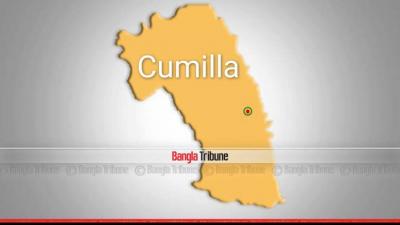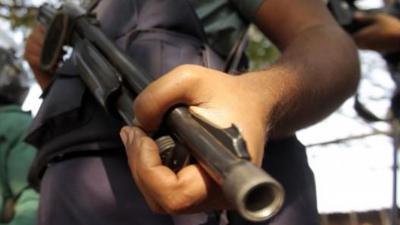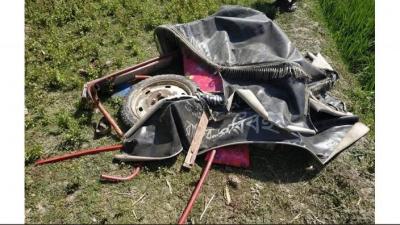 One part of the country has been flooded leaving thousands without homes while another part is in drought with no rain, leaving farmers in great distress.
One part of the country has been flooded leaving thousands without homes while another part is in drought with no rain, leaving farmers in great distress.
Several districts in Rangpur, Rajshahi, Mymensingh and Sylhet divisions have been flooded due to continuous rain.
Northern districts such as Kurigram, Lalmonirhat, Gaibandha, Bogura, Sirajganj, Pabna, Sherpur, and, Jamalpur that are closer to rivers Teesta, Dharla, Jamuna and Brahmaputra have taken the worst hit of the flood.
Whereas people of the aforementioned areas are in dire need of dry land, the north-western Khulna region is in severe drought with very little to no rainfall even during monsoon.
The lack of rain has significantly hampered agriculture and farmers are already lamenting the losses they will incur due to drought.
Bangla Tribune’s Khulna correspondent reports that cultivation of Ayush paddy has been disrupted as the rainfall didn’t come at the right time. Although they were hoping for a harvest of Aman rice near the end, the lack of rain has ended those hopes too.
Khulna Department of Agricultural Extension’s Deputy Director Pankaj Kanti Majumder said that there was no sign of rain one week into the second month of monsoon.
“There has been light rain but it wasn’t enough. There is a target of cultivating Aman rice on 92,000 hectres of land in Khulna,” he said. He added that Ayush harvest has been damaged and now that odds were same for Aman rice as well.
He added that Ayush harvest has been damaged and now that odds were same for Aman rice as well.
Khulna met office’s senior Senior Meteorologist Amirul Azad said that there have been light rain in some districts but it was nowhere near enough.
The rainfall at Khulna was 264 mm in June and 266 mm in July of 2018. However, this year only 115 mm of rain has been recorded in June and 157 mm till now in July.
Meanwhile, Bangla Tribune’s Satkhira correspondent reports farmers being unable to cultivate their lands. Many resorted to planting seeds by watering their lands through tube wells.
According to Satkhira met office, the district saw 150 mm rain in May, 259 mm in June and 241 mm in July last year.
However, this year’s statistics so far is 117 mm in May, 218 mm in June and 70 mm of rain in July.
“There is no sign of rain this year,” laments Abul Hossain, a farmer at Satkhira Sadar’s Rajar Bagan area.
He added that he had bought a motor pump during the harvest of Boro paddy but the line was disconnected from the powerhouse.
“It’s becoming harder to harvest Aman rice by getting a new power line,” he said.
Khulna Department of Agricultural Extension Deputy Director Arabindu Biswas said that the farmers are in great distress about cultivation of Ayush, Aman rice and jute retting.
“They cannot prepare the land and the seedlings are also going bad,” he said.
Meanwhile, no rainfall has been recorded in the south-western region of Jashore so far due to which the farmers are not planting the seedlings.
They are now contemplating resorting to blocking through irrigation as an alternative, reports Bangla Tribune’s Jashore correspondent.
The cost of cultivation is expected to rise and since the small water bodies have died up jute retting has been severely disrupted.
“If there is no rainfall we’ll have to resort to blocks which means an additional Tk 3,000,” says farmer Baharul Islam.
He said that he hasn’t yet harvested the jute due to water shortage and in case of no rainfall retting will have to be done in ditches which will mean the fibre will not retain its golden hue causing the prices to go down as well.
“River Kapatakkha is just a mile away but it’s filled with water hyacinths,” said Jalal Uddin, a farmer at Keshabpur Upzila who is yet to harvest his jute.
“Plus there is this added cost of transport,” he added.
Jashore met office recorded 222 mm of rain in June and 353 mm in July last year. However, this year, the rainfall recorded was 155 mm in June and 143 mm till Jul 24.
The situation is similar at the district of Bagerhar where prawn farming has been disrupted. The vegetable farmers are at a loss due to bad harvest.
“I couldn’t plant vegetables this year due to lack of rain,” says Rezaul Islam, a farmer at Chitalmari who usually produces hundreds of tonnes of vegetables each year.
Bagerhat Department of Agricultural Extension Deputy Director Aptar Uddin said that they are advising the farmers to plant BR-23 paddy this year.
Bangla Tribune’s Kushtia Correspondent reported that areas that are outside the irrigation facilities of Ganga-Kapatakkha are also facing difficulties with farming. Cultivation of 35,000 acres of land has been disrupted.
Kushtia met office recorded 242 mm of rainfall in June and 88 mm as of July this year.
Special prayer gatherings for rain have been arranged throughout the districts in drought.
Bangla Tribune's Khulna, Satkhira, Jashore, Bagerhat and Kushtia correspondents provided inputs for this report






